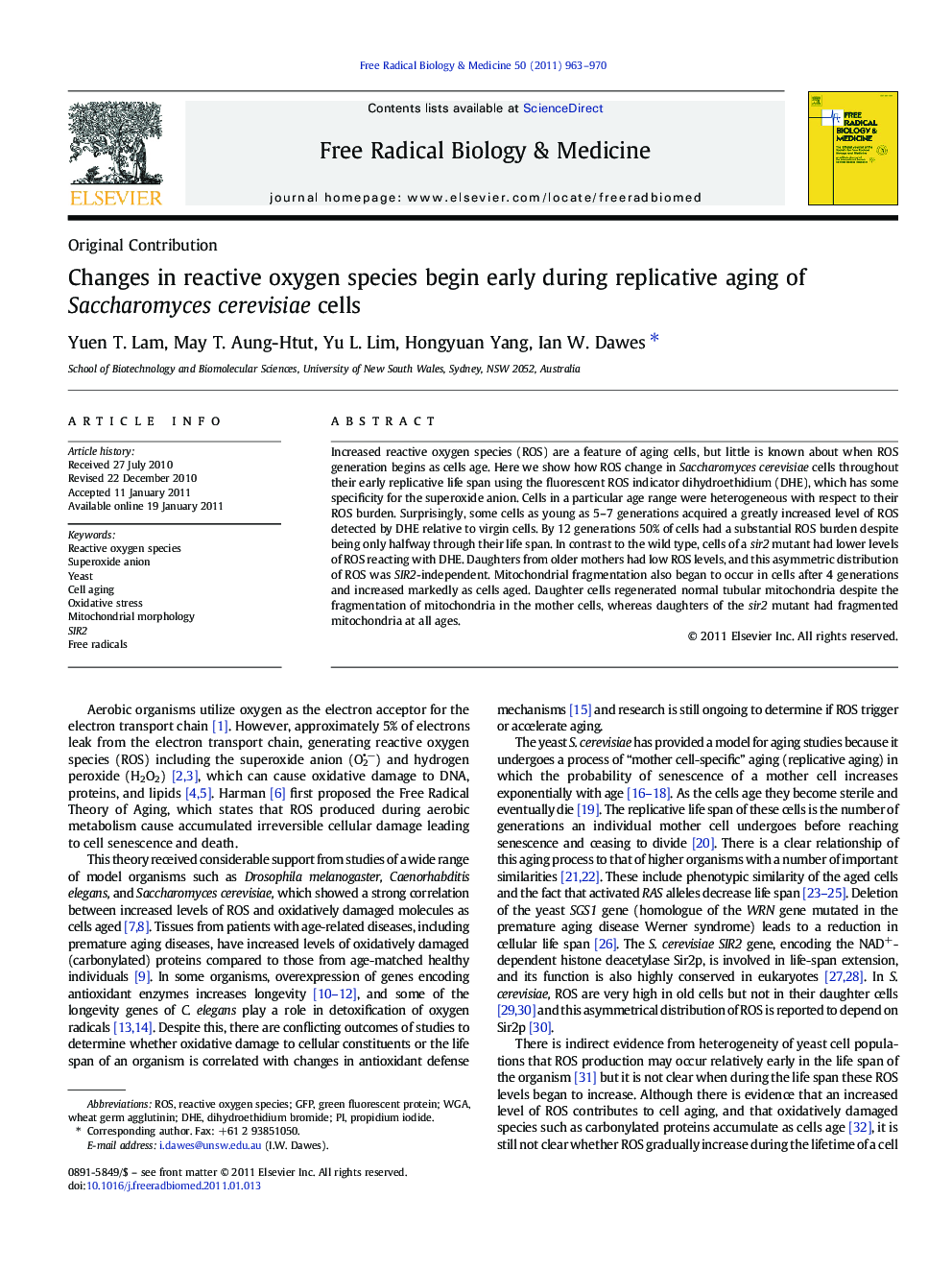| Article ID | Journal | Published Year | Pages | File Type |
|---|---|---|---|---|
| 1909491 | Free Radical Biology and Medicine | 2011 | 8 Pages |
Increased reactive oxygen species (ROS) are a feature of aging cells, but little is known about when ROS generation begins as cells age. Here we show how ROS change in Saccharomyces cerevisiae cells throughout their early replicative life span using the fluorescent ROS indicator dihydroethidium (DHE), which has some specificity for the superoxide anion. Cells in a particular age range were heterogeneous with respect to their ROS burden. Surprisingly, some cells as young as 5–7 generations acquired a greatly increased level of ROS detected by DHE relative to virgin cells. By 12 generations 50% of cells had a substantial ROS burden despite being only halfway through their life span. In contrast to the wild type, cells of a sir2 mutant had lower levels of ROS reacting with DHE. Daughters from older mothers had low ROS levels, and this asymmetric distribution of ROS was SIR2-independent. Mitochondrial fragmentation also began to occur in cells after 4 generations and increased markedly as cells aged. Daughter cells regenerated normal tubular mitochondria despite the fragmentation of mitochondria in the mother cells, whereas daughters of the sir2 mutant had fragmented mitochondria at all ages.
